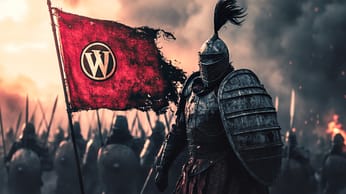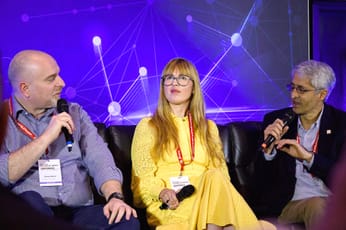Le Web: How is social-mobile-local changing media?
 A panel discussion the changes in media wrought by the latest technology, moderated by Thomas Crampton. Not surprisingly, Paul-François Fournier, Executive Vice President, Orange Technocentre defines media as, essentially, businesses that produce content, which is a pretty broad definition. Brad Garlinghouse, President, Consumer Applications & Commerce Group, AOL thinks that keeping traditional media away from the innovative, digital media is vital to stop new efforts being crushed.
A panel discussion the changes in media wrought by the latest technology, moderated by Thomas Crampton. Not surprisingly, Paul-François Fournier, Executive Vice President, Orange Technocentre defines media as, essentially, businesses that produce content, which is a pretty broad definition. Brad Garlinghouse, President, Consumer Applications & Commerce Group, AOL thinks that keeping traditional media away from the innovative, digital media is vital to stop new efforts being crushed.
Is Techmeme media? Gabe Rivera, Founder & CEO, thinks it is, even though they don’t write any of the content. The term “media” is overused, he suggests. When people say “media” they almost always think of broadcast media of various sorts. Bruno Patino, Senior Executive Vice President, Strategy Digital Director, France Télévisions Group & France 5 talks about the evolution of television and people start constructing social conversations online around TV shows as they watch them. This represents a loss of control for the media; they’re still in the game, they just don’t control it any more. And that’s not a bad thing. It maximises the experience.
Rivera suggests that most social media isn’t really integrated with existing media, just sort of bolted on the end. Very often tweets are just amplification or repetition. Fournier points out that media is changing on multiple fronts. TV is evolving into the multi-screen experience. Other media is now being published through social networks. There is lots of experimentation, and there will be failures and successes we learn from.
Patino argues that people don’t “deliver” the news any more, you give up control of your news when you publish it, and people will absurd it into their networks. The context in which we are telling stories is changing.
 Crampton moves on the conversation from social to local. Social is about scale; local is the response. Garlinghouse reminds us that traditional media has struggled to fund local coverage for decades. Patch is AOL’s attempt to reverse that – targeted at areas of around 50,000 to 80,000 people. But he thinks Twitter is garbage – or at least he says as much before he starts back-peddling, throwing out the world platform instead. He thinks there’s a huge opportunity at the intersection of the social graph, the interest graph and the local graph. Crampton challenges the sustainability of the Patch model, and Garlinghouse says that the experiment will play out over the next few years. Some Patch sites are already profitable.
Crampton moves on the conversation from social to local. Social is about scale; local is the response. Garlinghouse reminds us that traditional media has struggled to fund local coverage for decades. Patch is AOL’s attempt to reverse that – targeted at areas of around 50,000 to 80,000 people. But he thinks Twitter is garbage – or at least he says as much before he starts back-peddling, throwing out the world platform instead. He thinks there’s a huge opportunity at the intersection of the social graph, the interest graph and the local graph. Crampton challenges the sustainability of the Patch model, and Garlinghouse says that the experiment will play out over the next few years. Some Patch sites are already profitable.
Scaleability is the key question, says Patino. We used to call local 500k to 600k. That’s not local on the web. The ground is changing everywhere, so the old volume business model just breaks.
Alexia Tsotsis from Techcrunch challenges the relevancy of local media. Patch is at about 10m uniques in 18 months – but it’s clearly a challenge, says Garlinghouse. But to say that local community is irrelevant is short-sighted at the very least. Patino thinks that we have to find a solution, so that local powers continue to be monitored. But Rivera wouldn’t do a local site. There are plenty already – and by definition, there isn’t much to aggregate and filter. The abundance just isn’t there. Garlinghouse points out that stories of national importance can start in local areas – it’s something like citizen journalism curated. The question is: are local merchants interested enough to advertise on the platform?
Is mobile passing the desktop for media yet Probably not, says Rivera. However Twitter says that over 50% of its activity is on mobile, and it’s over 30% for Facebook. Garlinghouse would like to see more customisation of news experience based on your social, mobile and interest graphs. Patino certainly thinks mobile is the new frontier for TV and very important. They’re looking at iPhone and iPad appellations that allow you to catch up with, and share, TV. And Fournier suggests their DailyMotion deal was driven by similar considerations.
Sign up for e-mail updates
Join the newsletter to receive the latest posts in your inbox.











